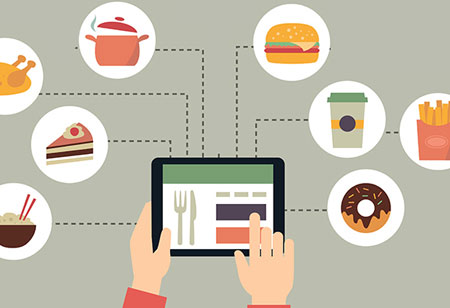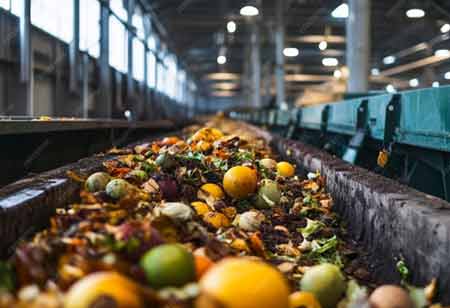THANK YOU FOR SUBSCRIBING
Be first to read the latest tech news, Industry Leader's Insights, and CIO interviews of medium and large enterprises exclusively from Food and Beverage Tech Review
How is Food Tech Industry Evolving?
One of the most significant industries in the world food and agriculture has a consistent, loyal customer base of 7 billion.

By
Food and Beverages Tech Review | Monday, November 25, 2019
Stay ahead of the industry with exclusive feature stories on the top companies, expert insights and the latest news delivered straight to your inbox. Subscribe today.
One of the most significant industries in the world food and agriculture has a consistent, loyal customer base of 7 billion. In an estimate made by the World Bank, food and agriculture consist of 10 percent of the global GDP, which means that the industry would be valued around $8 trillion worldwide on the basis of the projected global GDP of $88 trillion for 2019.
Fremont, CA: $1.71 trillion was spent on food and beverages in the year 2018 at the grocery stores and other retailers and away-from-home meals and snacks in the USA alone. In the same year, 9.7 percent of Americans’ income was spent on food, and this percentage has remained steady in the economic changes happening over the past 20 years. Despite the vast customer base, the food industry is still facing unprecedented challenges in production, regulations, and demand rising from consumer trends. The consumer demand has been hit by a wave of change in recent years. The consumers have increased their focus on sustainability, health, and freshness, which in turn has put a significant pressure on the food industry to innovate.
In recent years, new ideas to harness the power of technology for enhancing the global food supply have been implemented by the agtech innovators. These innovations are protecting the crops and maximizing the outputs. It has lead to a structural change in the agricultural system, which will help reach the sustainability goals of reducing water use, lowering greenhouse gases, ending deforestation, and even sequestering carbon back into the soil. This chance to utilize technology to upgrade food is huge and expands to improvising food usage and decrease waste. It is the main element to lessen the environmental impacts of an ever-rising growing human population.
Food Tech In the Present
Grocery ordering and delivery represent the biggest food-tech category. On the other hand, meal ordering includes the most significant number of privately held venture-backed startups in the food-tech worldwide. 2018 was an exceptional year for food tech with a record-breaking $16.9 billion in the funding recorded. In the report by Crunchbase, the three greatest deals of the year include 41 billion for Swiggy, $600 million for Instacart, and $590 million for iFood.
Food Tech Future
Food tech innovations have started to deliver new and novel approaches in three key areas along the value chain. These specific areas represent the technological approaches putting forward the severe pain points in the food industry, and it is anticipated that these sectors will go through significant growth and investment attention in the upcoming years.
Consumer Food Tech
Consumer food tech is part of the food technology investment that is dedicated to the development of technologies that are marketed toward the consumer. The segment aims to assuage consumer-driven demands, be it different distribution, plant-based meats, or nutrition-based tech.
With organic food trend reaching its peak and starting to commoditize, another food trend has come up to occupy its place. Plant-based, animal-free, and so on, regardless of what we call, it seems like the mass is moving toward the meatless craze. Several innovative companies are working on the commercialization of alternative proteins like Clara Foods and Ripple Foods, which are keen on producing dairy and nut-free milk alternatives.
Industrial Food Tech
Industrial food tech being the sub-segment of food tech, focuses on addressing the fundamental business models within the food industry. Some of the companies focus on the food itself. At the same time, others are exploring ways to package, process, and distribute the new wave of sustainable, innovative, and healthy eating.
Various preservation technology companies are paving the path in reducing food waste, and simultaneously improving product quality during transportation.
Innovative technology is going to play a critical role in determining the production of the food we eat, its packaging, delivery, taste, feel and smell, and reusability. The rising trend of investing in food tech will continue and help to deliver the promise of healthier, more sustainable food systems globally.
I agree We use cookies on this website to enhance your user experience. By clicking any link on this page you are giving your consent for us to set cookies. More info


However, if you would like to share the information in this article, you may use the link below:
https://www.fbtechreviewapac.com/news/how-is-food-tech-industry-evolving-nwid-427.html





